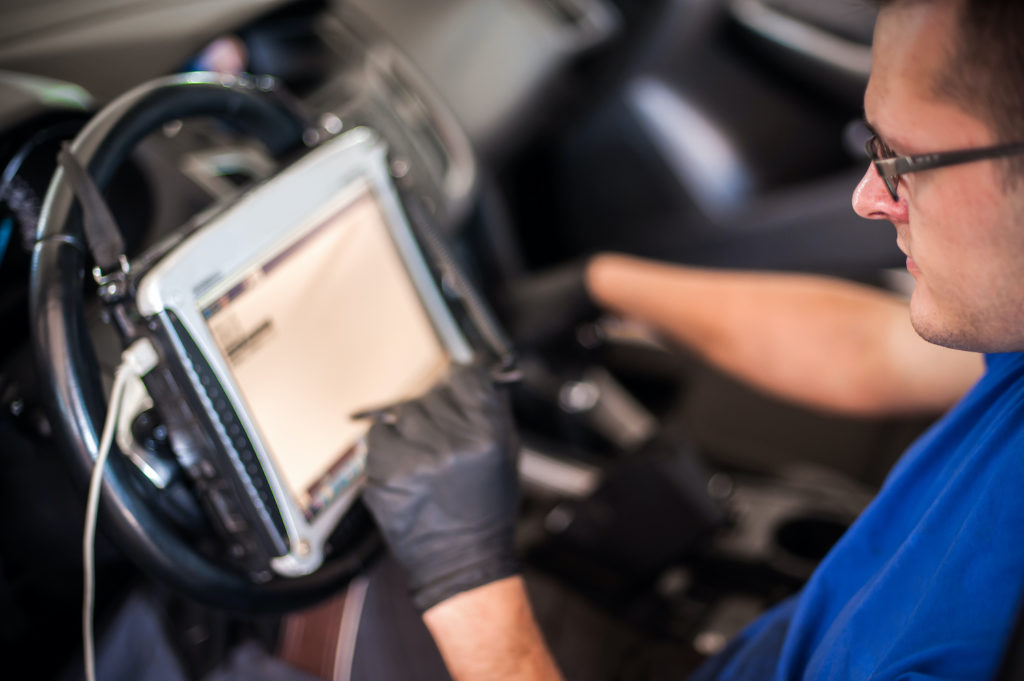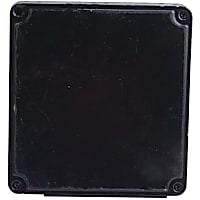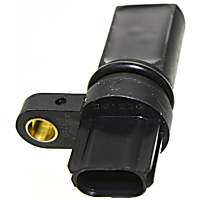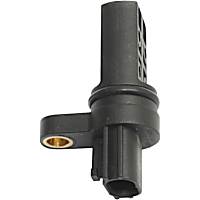On-board diagnostics (OBD) is a network of computers and sensors that monitor the performance and overall condition of a vehicle. When this system perceives an irregularity within the vehicle, it stores the information as a trouble code.
Trouble codes are a combination of letters and numbers that indicate the general location and nature of a potential issue. Many of them are generic, meaning they apply to most vehicles manufactured after 1996. There are, however, some codes that are manufacturer-specific. These codes have a unique definition, depending on the vehicle manufacturer.
P1135 is a manufacturer-specific code that’s used in Toyota, Lexus, Nissan, and many other vehicles. This code doesn’t often appear, but when it does, it also doesn’t always have the same definition.
What Does the P1135 Code Mean?
The P1135 code has several different definitions, depending on the vehicle’s make. Here’s a list of what this code can mean on various different vehicles:
- P1135 AUDI HO2S Heater Circuit- Bank 1 & 2 Sensor 2 Electrical Malfunction
- P1135 BMW O2 Sensor Heater Circuit Low Voltage Bank 1 Sensor 1
- P1135 BUICK HO2S Lean Average Bank 1 Sensor 1
- P1135 CADILLAC HO2S Lean Average Bank 1 Sensor 1
- P1135 CHEVROLET HO2S Lean Mean Bank 1 Sensor 1
- P1135 CHRYSLER Glow Plug Control Module Voltage Supply Concern
- P1135 DODGE Glow Plug Control Module Voltage Supply Concern
- P1135 FORD Pedal Position Sensor ‘A’ Circuit Intermittent
- P1135 GMC HO2S Lean Mean Bank 1 Sensor 1
- P1135 HYUNDAI Injection Timing Servo
- P1135 INFINITI Intake Valve Timing Control Bank 2
- P1135 LEXUS Air/Fuel Ratio Sensor Heater Circuit Malfunction Bank 1 Sensor 1
- P1135 MINI O2 Sensor Heater Circuit Low Voltage Bank 1 Sensor 1
- P1135 NISSAN Intake Valve Timing Control Bank 2
- P1135 SCION Air/Fuel Ratio Sensor Heater Circuit Malfunction Bank 1 Sensor 1
- P1135 SUBARU Front Left Oxygen Sensor Circuit Open
- P1135 TOYOTA Air/Fuel Ratio Sensor Heater Circuit Malfunction Bank 1 Sensor 1
- P1135 VOLKSWAGEN HO2S Heater Circuit- Bank 1 & 2 Sensor 2 Electrical Malfunction
Below are the definitions of the P1135 code on Toyota, Lexus, and Nissan vehicles. Note, however, that this code doesn’t appear on all models and model years of these platforms:

P1135 on Toyota
Diagnostic trouble code (DTC) P1135 on Toyota vehicles stands for “Air Fuel Ratio Sensor (Bank 1 Sensor 1) Heater Circuit Malfunction.” This code sets when the powertrain control module (PCM) detects a potential issue with the air/fuel ratio sensor heater circuit. The code may also set if the input signal from the heater circuit of the air/fuel ratio sensor’s heater circuit does not correlate with the expected values.
Air/fuel ratio sensors (also called broadband lambda sensors or lambda probes) need to reach a specific operating temperature to produce accurate readings. Because of this, these sensors have a heater element that helps them get up to temperature quickly. This kind of O2 sensor has to reach 1200-1400 degrees F in order to work properly.
The PCM controls the heater element circuit by letting the current flow to ground. The PCM monitors the input from the heater element circuit by comparing it to factory-specified values. A P1135 code on a Toyota vehicle sets when the PCM detects that the bank 1 air/fuel ratio sensor 1 heater current is less than the expected values at any time while the engine is running.
P1135 on Lexus
Since Lexus is the luxury division of Toyota, the definition of the code is essentially the same for both automakers. DTC P1135 on Lexus vehicles stands for “Air/Fuel Ratio Sensor Heater Circuit Malfunction (Bank 1 Sensor 1).” This trouble code sets when the powertrain control module (PCM) has detected a malfunction in the heater circuit of the air/fuel ratio sensor.
Again, air/fuel ratio sensors, also called broadband lambda sensors or lambda probes, need to reach a specific operating temperature to create an accurate reading or produce an accurate voltage signal. In order to bring the air/fuel ratio sensors up to the prescribed operating temperature faster, heater elements are included in the sensor’s unit.
The PCM controls this heater element based on information from the engine coolant temperature (ECT) sensor and the engine load. The PCM monitors the input from the heater element circuit by comparing it to factory-specified values. A P1135 code on a Lexus vehicle sets when the PCM detects that the bank 1 air/fuel ratio sensor 1 heater current is less than the expected values at any time while the engine is running.
P1135 on Nissan
DTC P1135 on Nissan vehicles stands for “Intake Valve Timing Control Performance (Bank 2).” This code sets when the powertrain control module (PCM) detects a difference between the target angle and the actual angle of the intake camshaft.

Most modern Nissan vehicles have variable valve timing (VVT), a system that uses an intake valve timing control unit (also known as an actuator) mounted on the end of the camshaft. The actuator adjusts the camshaft angle, thereby altering valve timing. The PCM manages a solenoid valve that applies oil pressure to operate the actuator. The PCM uses the crankshaft and camshaft position sensors to monitor VVT system operation. This allows the PCM to increase torque in the low/medium speed range as well as the output in the high-speed range.
If the PCM detects that the intake valve timing control did not register incorrectly, the P1135 code is stored.
What Are the Possible Causes of the P1135 Code?
Like other trouble codes, the P1135 code also has several possible causes. Listed below are the likely reasons why the P1135 code sets on Toyota, Lexus, and Nissan vehicles:
P1135 on Toyota
- Air/fuel sensor has failed due to a faulty internal heater
- Air/fuel sensor heater power (12V) circuit is open
- Air/fuel sensor heater has malfunctioned/failed
- Air/fuel sensor heater control circuit or ground circuit is open
- Faulty PCM
P1135 on Lexus
- Air/fuel sensor has failed due to a faulty internal heater
- Air/fuel sensor connector is damaged (please check the pins for damage and moisture)
- Air/fuel sensor heater power (12V) circuit is open
- Air/fuel sensor heater control circuit or ground circuit is open
- Faulty PCM

P1135 on Nissan
- Camshaft position sensor has failed
- Signal pickup portion of the camshaft is contaminated with debris
- Camshaft position sensor connector is damaged (check pins for damage)
- Low or dirty engine oil
- A faulty intake valve timing control solenoid
- A bad intake valve timing control unit
- An issue with the timing chain or associated components
What Are the Common Symptoms of the P1135 Code?
When a trouble code sets, you may notice a couple of symptoms. However, this may not always be the case because, for some trouble codes, the only sign may be an illuminated warning light. Below are the most common symptoms of the P1135 code on different makes:
P1135 on Toyota
- Malfunction indicator lamp (MIL) or check engine light is on
P1135 on Lexus
- Malfunction indicator lamp (MIL) or check engine light is on
P1135 on Nissan
- Malfunction indicator lamp (MIL) or check engine light is on
- Possible lack or loss of power
- Possible engine rough idle
- Rattling noise from the engine
How to Diagnose the P1135 Code
Proper diagnosis of trouble codes can be a challenging and time-consuming task. Diagnostic trouble codes can only indicate the nature and general location of the potential problem, not the main issue. This is why you need to sift through a list of possible causes per trouble code in order to determine the root cause.
Diagnosing the P1135 trouble code is quite complicated because the definition of this code varies depending on the manufacturer. This means that in order to properly troubleshoot this code, you’ll need a reliable, vehicle-specific repair manual or database. These materials have detailed repair information as well as helpful illustrations and diagrams that can help you address the issue correctly.
How to Fix the P1135 Code
As mentioned above, each trouble code has several possible causes. In order to reach a long-term and effective solution, you’ll need specific repair information from repair manuals and databases.
This is because different vehicles have different trouble code definitions, terminologies, components, and repair instructions. What works to fix the P1135 code on Nissan vehicles will not work on the P1135 on Lexus vehicles and that’s because the definition of the P1135 code on these two makes is vastly different.
If you’re not confident in your repair skills, or if you don’t know how diagnostic trouble code repair works, you may always consult a certified mechanic or technician to do the repairs for you.
Products Mentioned in this Guide
Any information provided on this Website is for informational purposes only and is not intended to replace consultation with a professional mechanic. The accuracy and timeliness of the information may change from the time of publication.

 Coolant Temperature Sensor
Coolant Temperature Sensor
 Engine Control Module
Engine Control Module
 Camshaft Position Sensor
Camshaft Position Sensor
 Crankshaft Position Sensor
Crankshaft Position Sensor














